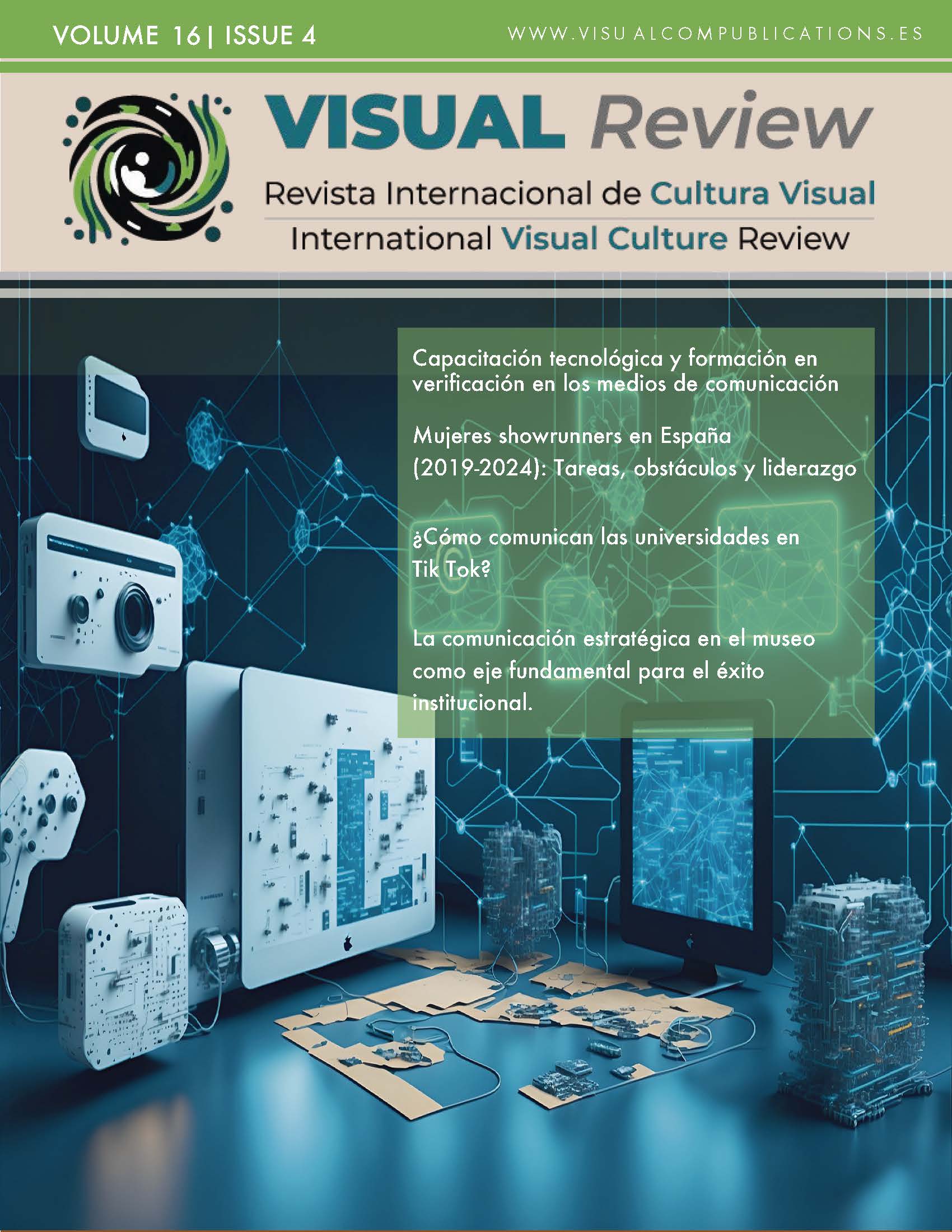Contributions Created on Spaces of Collective Virtual Intelligence and Their Projection in Video Game Sound Design
The fandom community of the video game No Man's Sky
DOI:
https://doi.org/10.62161/revvisual.v16.5281Keywords:
video games, sound, fandom, audio, sound design, proceduralAbstract
In today's digital society, user interactions in collaborative virtual spaces on the internet are transforming the audiovisual design of big-budget digital products, such as AAA video game productions.
The virtual communities of fans of a popular digital product are highly relevant for their online presence, due to the significant influence of user-generated contributions. These fandom communities are collaborative virtual spaces where users share knowledge and experiences on a topic or audiovisual product of interest.
This research focuses on the virtual community of fans of the procedural video game No Man's Sky in 2016 and how the contributions of the wiki fandom are reflected in the official updates published until February 2024.
An exploratory study is proposed, which uses a scientific methodology based on the content analysis of registered users' interactions. The study consists of a virtual ethnography that identifies the audio content generated by the virtual community. The aim is to establish an effective correlation with the technological evolution of the video game analyzed, which has led to changes in the production of updates.
Downloads
Global Statistics ℹ️
|
454
Views
|
115
Downloads
|
|
569
Total
|
|
References
Advanced Music SL. (2024). Sónar 2016. Sonar.es. https://www.sonar.es/es/about/ediciones-anteriores/2016
Alonso Guisande, M. Á. (2017). La generación de audio procedural como forma de expresión sonora en el videojuego No Man´s Sky. Universidad Europea.
Broomhall, J. (2015). The sound of No Man’s Sky | Develop. Develop-Online.Net. http://www.develop-online.net/interview/the-sound-of-no-man-s-sky/0209680
Hedge, S., & Grouling, J. (2021). Roleplaying games in the digital age: essays on transmedia storytelling, tabletop RPGs and fandom. McFarland.
Hello Games Ltd. (2016). No Man´s Sky (Echoes). Hello Games.
Jenkins, H., Ford, S., & Green, J. (2015). Cultura Transmedia: La creación de contenido y valor en una cultura en red. GEDISA. https://books.google.es/books?id=DkHjCgAAQBAJ
Jones, A. (2016). No Man’s Sky Game Audio Review. thesoundarchitect.co.uk. http://www.thesoundarchitect.co.uk/no-mans-sky-game-audio-review/
López, M. (2016). Qué es el sonido procedural y cómo se utilizará en «No Man’s Sky». xataka.com. https://www.xataka.com/videojuegos/que-es-el-sonido-procedural-y-como-se-utilizara-en-no-man-s-sky
Paredes, G. (2022). Narrativas y usuarios de la sociedad transmedia. Editorial Dykinson, S.L. https://books.google.es/books?id=5JWnEAAAQBAJ
Sony Interactive Entertainment. (2024). No Man’s Sky. playstation.com. https://www.playstation.com/es-es/games/no-mans-sky-ps4/
Sony Interactive Entertainment Europe Limited (SIEE). (2024). PlayStation. https://www.playstation.com/es-es/
Tait, E. R., & Nelson, I. L. (2021). Nonscalability and generating digital outer space natures in No Man’s Sky. Environment and Planning E: Nature and Space, 0(0), 25. https://doi.org/10.1177/25148486211000746 DOI: https://doi.org/10.1177/25148486211000746
Vizcaíno-Verdú, A. (2021). Cultura participativa, fandom y narrativas emergentes en redes sociales. Editorial Dykinson, S.L. https://books.google.es/books?id=q0hQEAAAQBAJ
Voinyx. (2016). No Man’s Sky: generando un universo de sonidos mediante técnicas de audio procedural. futuremusic-es.com. http://www.futuremusic-es.com/no-mans-sky-generando-universo-sonidos-tecnicas-audio-procedural/
Downloads
Published
How to Cite
Issue
Section
License
Copyright (c) 2024 VISUAL REVIEW. International Visual Culture Review / Revista Internacional de Cultura Visual

This work is licensed under a Creative Commons Attribution-NoDerivatives 4.0 International License.
Those authors who publish in this journal accept the following terms:
-
Authors retain copyright.
-
Authors transfer to the journal the right of first publication. The journal also owns the publishing rights.
-
All published contents are governed by an Attribution-NoDerivatives 4.0 International License.
Access the informative version and legal text of the license. By virtue of this, third parties are allowed to use what is published as long as they mention the authorship of the work and the first publication in this journal. If you transform the material, you may not distribute the modified work. -
Authors may make other independent and additional contractual arrangements for non-exclusive distribution of the version of the article published in this journal (e.g., inclusion in an institutional repository or publication in a book) as long as they clearly indicate that the work was first published in this journal.
- Authors are allowed and recommended to publish their work on the Internet (for example on institutional and personal websites), following the publication of, and referencing the journal, as this could lead to constructive exchanges and a more extensive and quick circulation of published works (see The Effect of Open Access).













